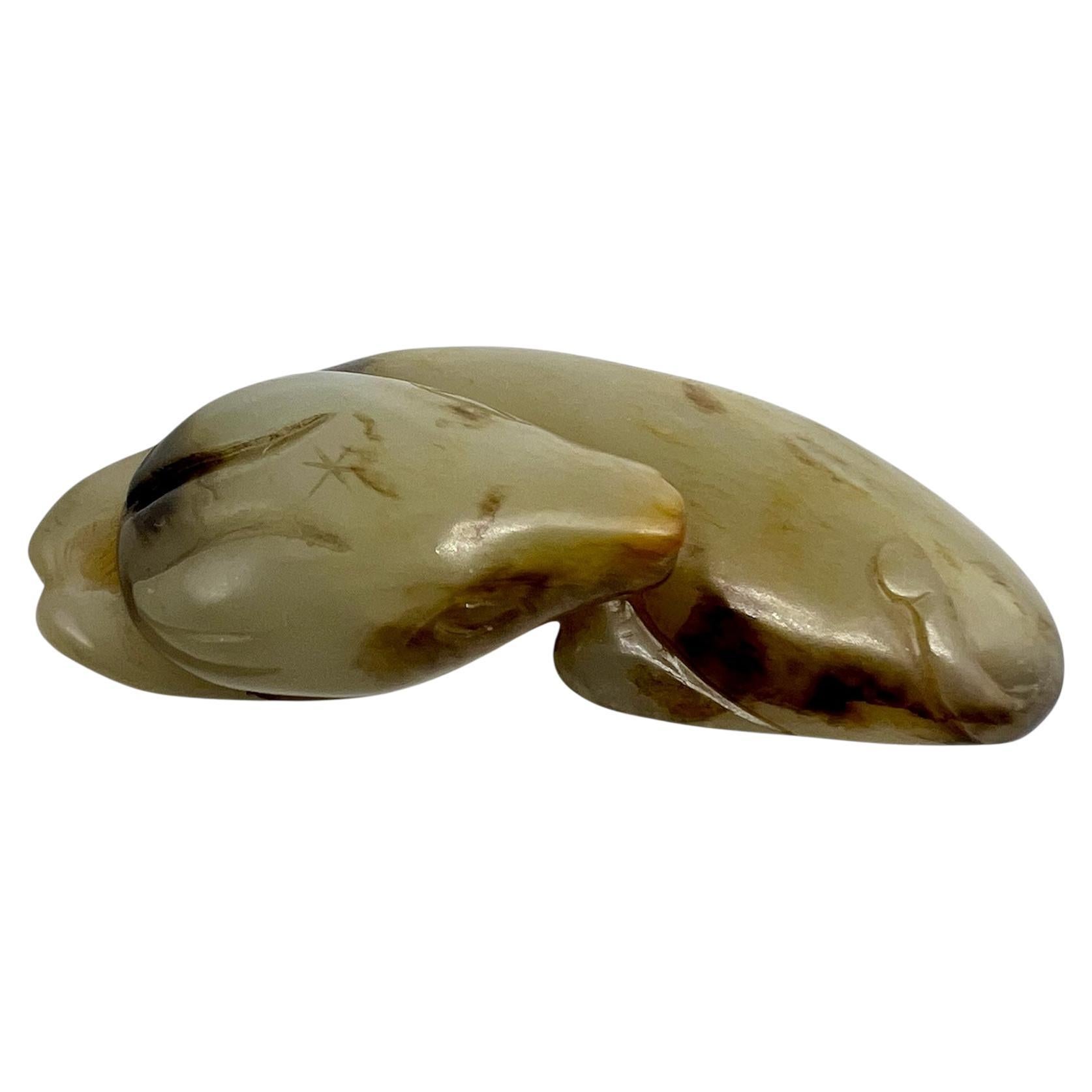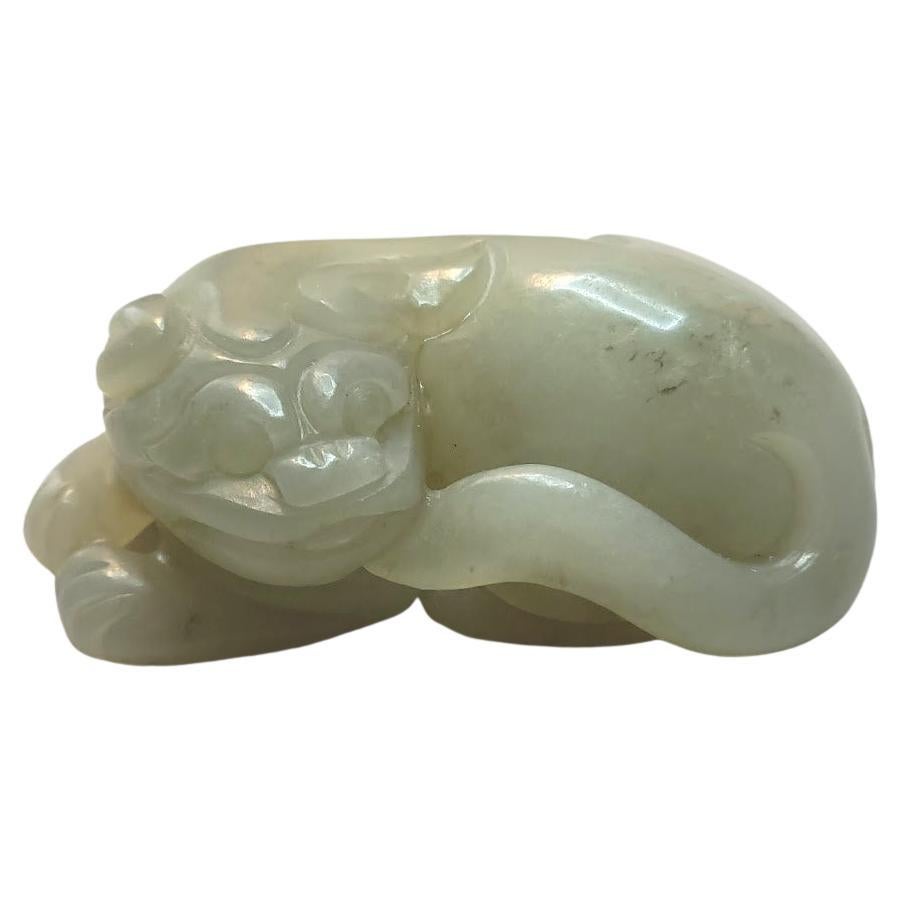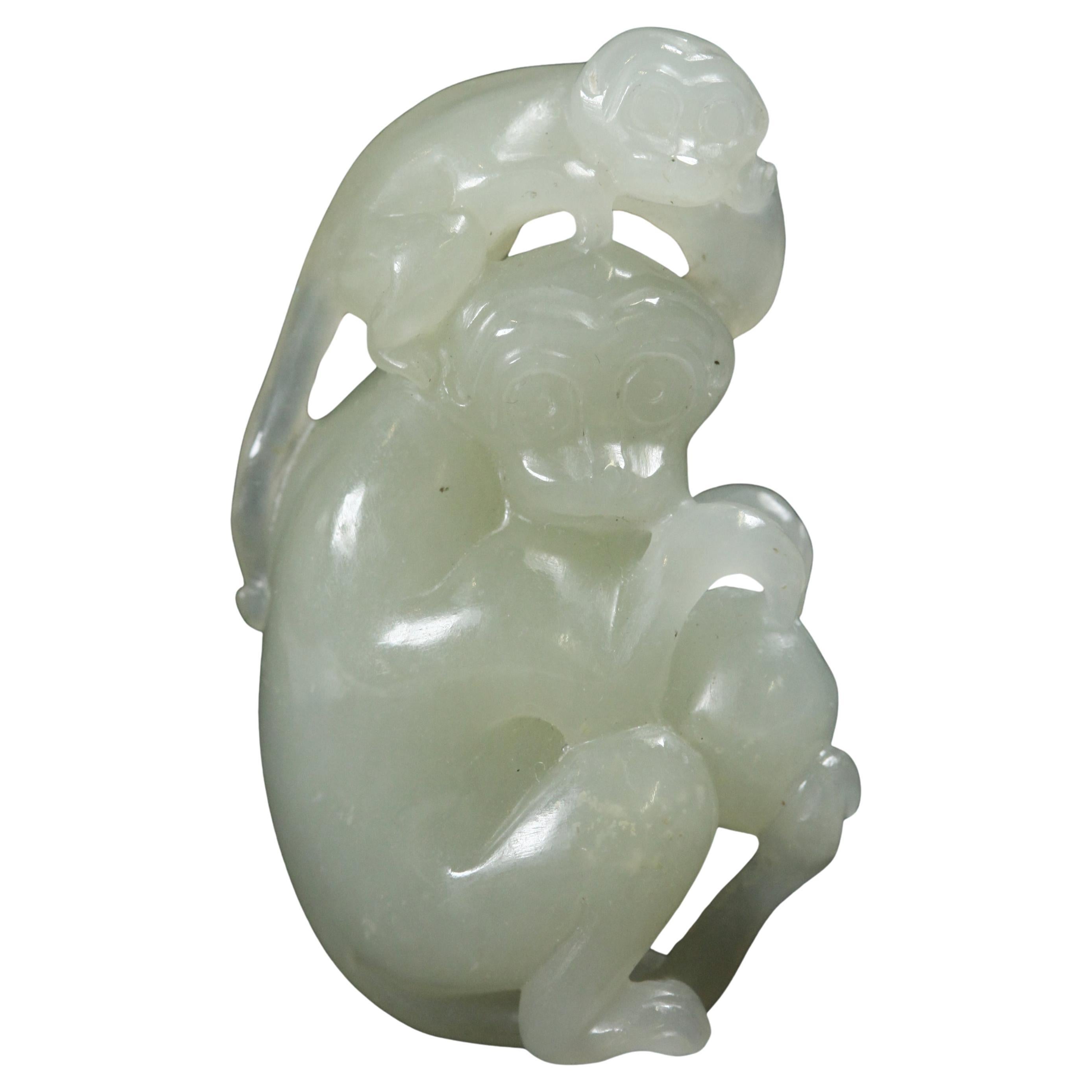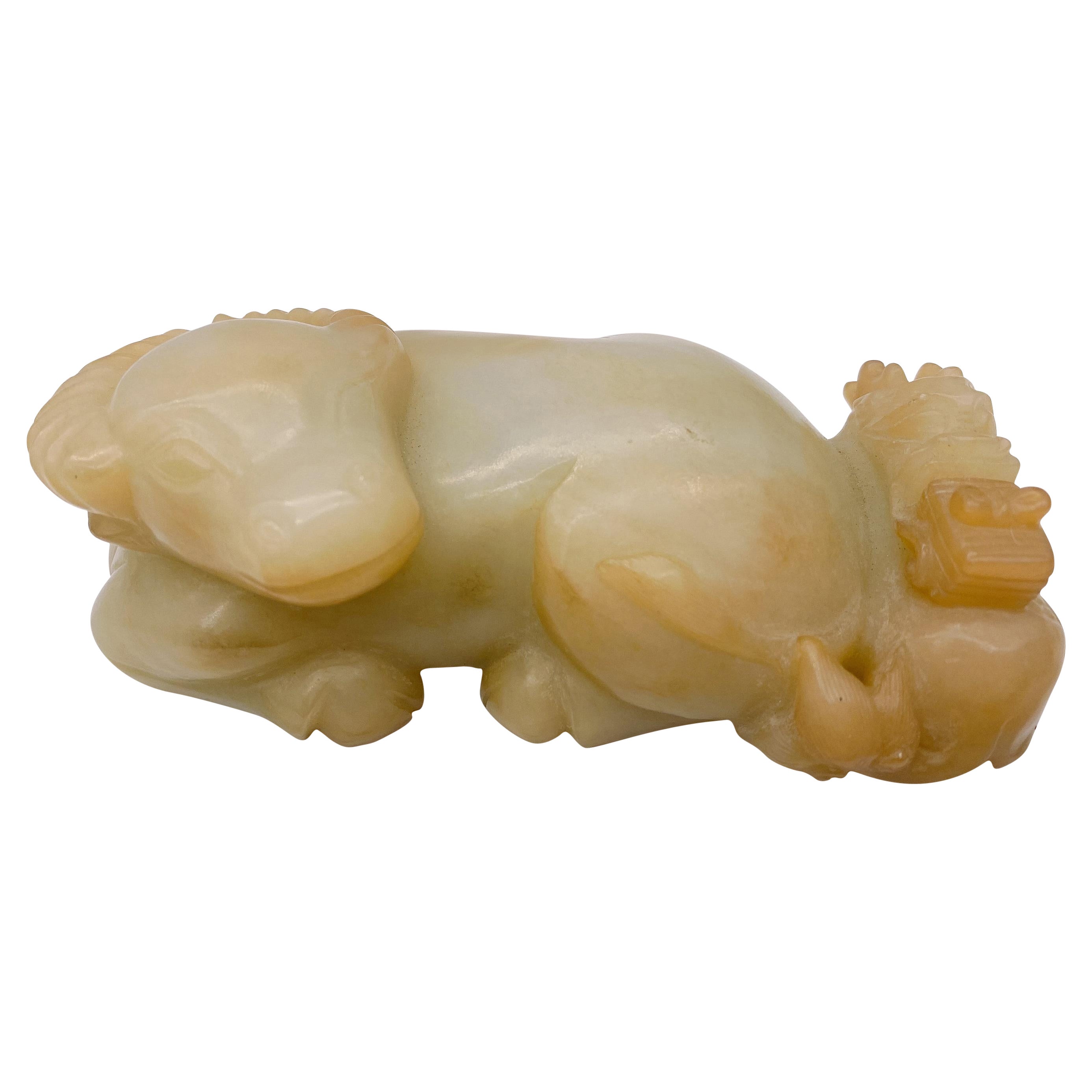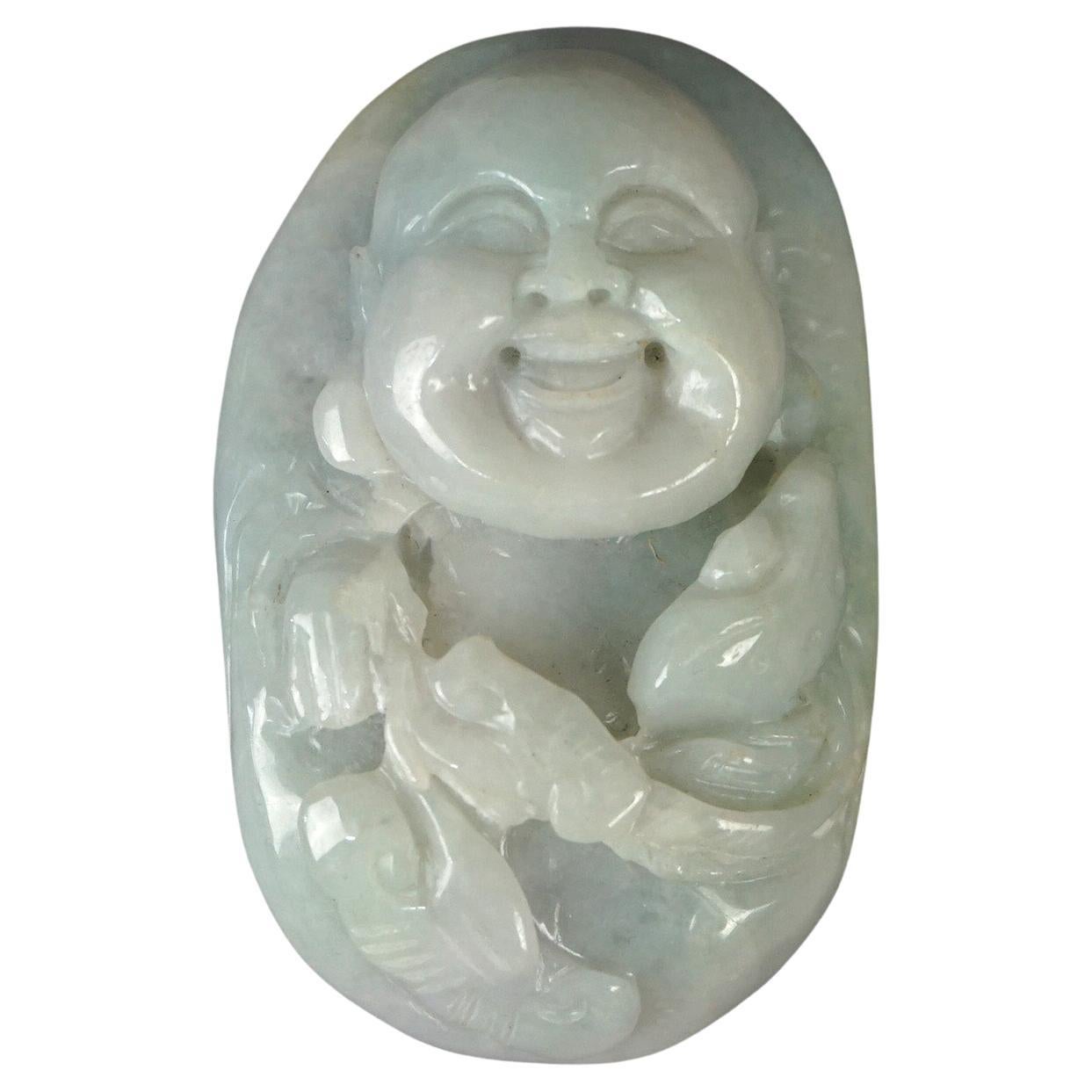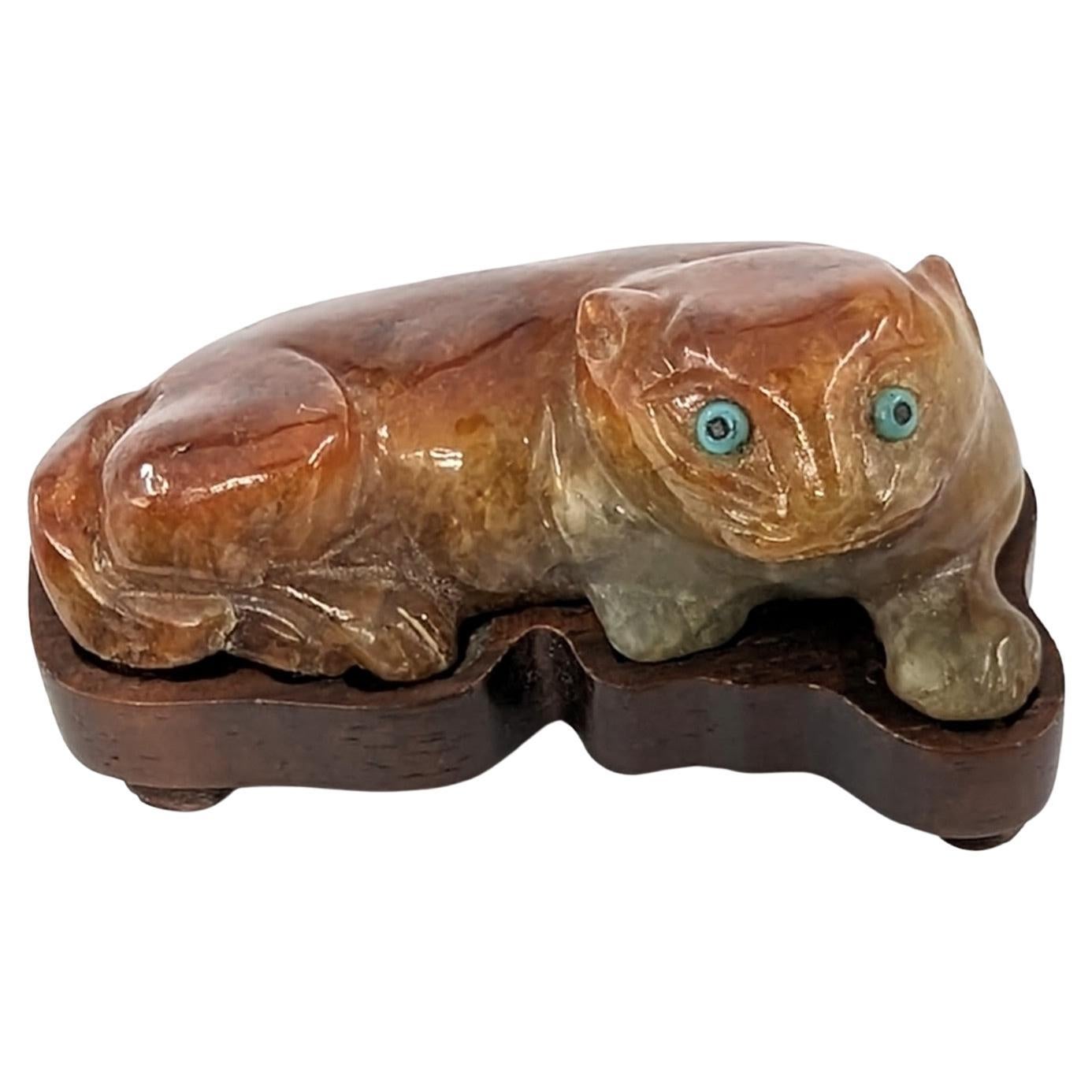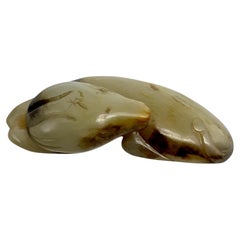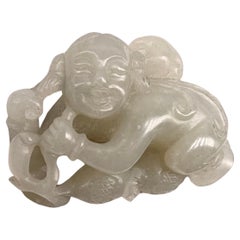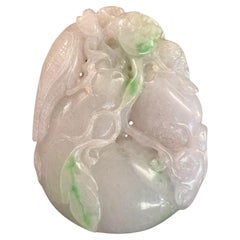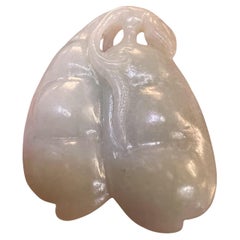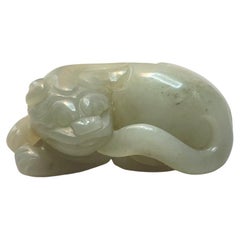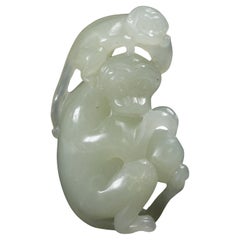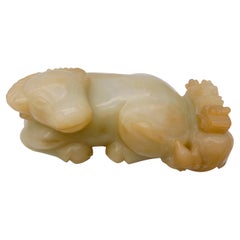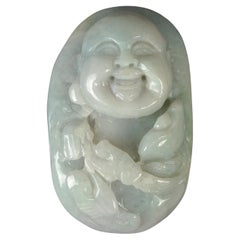Items Similar to A Carved Celadon Jade Figure of a Recumbent Cat China, Qing Dynasty (1644-1912)
Want more images or videos?
Request additional images or videos from the seller
1 of 21
A Carved Celadon Jade Figure of a Recumbent Cat China, Qing Dynasty (1644-1912)
$1,166.46
£850
€999.42
CA$1,610.57
A$1,786
CHF 938.41
MX$21,821.87
NOK 11,740.79
SEK 11,020.73
DKK 7,460.88
About the Item
A Carved Celadon Jade Figure of a Recumbent Cat
China, Qing Dynasty (1644-1912) or later
Finely carved from a single piece of celadon jade with soft translucency and natural inclusions, this charming sculpture represents a recumbent cat, rendered in a stylized yet expressive manner. The feline is shown resting serenely, with its round head raised and its limbs tucked beneath its body. The incised facial features - wide circular eyes and a slight smile
- give the piece a gentle, animated presence.
The underside is worked with two perforations, suggesting it may have served as a toggle, pendant, or decorative fitting.
Dimensions: Approx. 5 cm long, 2 cm High
Condition: Good overall with natural veining, some surface marks consistent with age and
use.
Provenance: From a private European collection
In Chinese culture, cats are often associated with good fortune, peace, and warding off evil spirits, making this a piers of both aesthetic and symbolic value.
- Dimensions:Height: 0.79 in (2 cm)Width: 1.97 in (5 cm)Depth: 0.79 in (2 cm)
- Materials and Techniques:
- Place of Origin:
- Period:
- Date of Manufacture:1850
- Condition:Wear consistent with age and use.
- Seller Location:London, GB
- Reference Number:1stDibs: LU8001244875932
About the Seller
No Reviews Yet
Vetted Professional Seller
Every seller passes strict standards for authenticity and reliability
Established in 2001
1stDibs seller since 2023
16 sales on 1stDibs
- ShippingRetrieving quote...Shipping from: London, United Kingdom
- Return Policy
Authenticity Guarantee
In the unlikely event there’s an issue with an item’s authenticity, contact us within 1 year for a full refund. DetailsMoney-Back Guarantee
If your item is not as described, is damaged in transit, or does not arrive, contact us within 7 days for a full refund. Details24-Hour Cancellation
You have a 24-hour grace period in which to reconsider your purchase, with no questions asked.Vetted Professional Sellers
Our world-class sellers must adhere to strict standards for service and quality, maintaining the integrity of our listings.Price-Match Guarantee
If you find that a seller listed the same item for a lower price elsewhere, we’ll match it.Trusted Global Delivery
Our best-in-class carrier network provides specialized shipping options worldwide, including custom delivery.More From This Seller
View AllA Fine Carved Jade Toggle in the Form of a Recumbent Dog China, Qing Dynasty
Located in London, GB
A Carved Jade Toggle in the Form of a Recumbent Dog
China, Qing Dynasty (1644-1912) or earlier
A finely carved nephrite jade toggle in the form of a recumbent dog, portrayed in a...
Category
Antique 19th Century Chinese Sculptures and Carvings
Materials
Jade
A beautiful Antique chinese white jade open work Toggle /carving.
Located in London, GB
A beautiful Antique chinese white jade open work pendant/carving.
A magnificent Open work White Nephrite Jade carving of the kneeling boy holding a large lingzhi mushroom.
His ro...
Category
Antique Late 19th Century Sculptures and Carvings
Materials
Jade
A Fine Antique Chinese Jade Jadeite Toggle Pendant Carving.
Located in London, GB
A Fine Chinese jade jadeite toggle pendant of a fruit finely carved in relief with a bird and squirrel from the white jade jadeite stone with green incl...
Category
Early 20th Century Chinese Sculptures and Carvings
Materials
Jade
A FINE AND LARGE CHINESE WHITE JADE BEAN TOGGLE/PENDANT. 19/20th C
Located in London, GB
A Chinese white jade toggle/pendant, finely carved in relief as a branch of beans.
19/20th Century
The well polished translucent high quality jade nephrite is of a white tone wi...
Category
Early 20th Century Chinese Sculptures and Carvings
Materials
Jade
A Fine A Grade Apple green Jade Jadeite Pendant carving of a Eggplant
Located in London, GB
Chinese jade pendant with a yellow metal mount and carved egg plants.
47mm high excluding mount.
In good condition.
Category
Antique 19th Century Sculptures and Carvings
Materials
Jade
A SUPERB LARGE WHITE JADE OVAL TOGGLE/PENDANT. 19/20th C
Located in London, GB
Of oval form, finely carved in relief with a bird perching on a tree, flowers and foliage , the reverse with a chinese character, well polished translucent high quality jade nephrit...
Category
Early 20th Century Chinese Sculptures and Carvings
Materials
Jade
You May Also Like
Antique Chinese Carved Jade Foo Dog Figurine
Located in Chesterland, OH
Antique Jade Carving of a Chinese Foo Dog – A Powerful Talisman of Protection & Prosperity
This exquisite jade carving depicts a majestic Foo Lion (Shi) in a gracefully coiled posit...
Category
Antique 19th Century Chinese Figurines and Sculptures
Materials
Jade
Chinese celadon jade carving of a monkey
Located in New York, NY
carving of a monkey with her baby playing on top of her head
Category
Late 20th Century Chinese Sculptures and Carvings
Materials
Jade
Qing Dynasty an Antique Chinese Carved Jade Figure of a Bullock
Located in Brea, CA
A Qing dynasty Chinese carved jade figure of a bullock. 13 cm x 6cm x 5 cm. weight 600g see more pictures.
Category
Antique 19th Century Chinese Qing Antiquities
Materials
Jade
Antique Chinese Carved Celadon Jade Buddha, 19th C
Located in Big Flats, NY
Antique Chinese Carved Celadon Jade Buddha 19th C....
Measures- 3''H x 2''W x 1.5''D
A finely carved 19th-century Chinese Buddha figure in celadon jade. The piece features a joyful expression and intricate detailing, characteristic of traditional Chinese craftsmanship. The celadon color...
Category
Antique 19th Century Asian Sculptures and Carvings
Materials
Jade
$440 Sale Price
20% Off
Antique Chinese Jadeite Recumbent Cat Pendant Turquoise Inlaid Eyes 19c Qing
Located in Richmond, CA
A wonderful and cute antique Chinese carved jadeite recumbent cat, comfortably nested in a matching hardwood stand. The almost fluffy looking cat's intense greenish blue eyes are inl...
Category
Antique 19th Century Figurines and Sculptures
Materials
Jade
Antique Chinese Carved Hetain W/Celadon Jade "The Monkey Family" 18/19th Century
Located in Norton, MA
Antique Chinese Carved Hetain White/Celadon Jade "The Monkey Family" 3 monkeys, father, mother, and kid. They are pulling a lot of coins into a giant bag—good use of russet skin colo...
Category
Antique Late 18th Century Chinese Other Sculptures and Carvings
Materials
Jade
